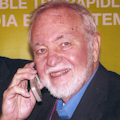Digitally Tunable Capacitor Lets You Build Variable Filters, Z-Matches, And More
How do you implement a variable capacitor these days? Mechanical caps are out. That leaves varactors, which work fine but require higher voltages that often are not available, and their response is nonlinear. Yet the Peregrine Semiconductor serial peripheral interface (SPI) PE64904 and I2C interface PE64905 DuNE Digitally Tunable Capacitors (DTCs) let you vary the capacitance digitally in 32 steps with a 5-bit serial input word.
Overall capacitance ranges from 0.7 to 4.6 pF in 131-femtofarad (fF) steps. Each device comprises five capacitors in series and all connected in parallel with a MOSFET switch. The combination is made available externally with two leads. The useable frequency range is from 100 MHz to 3 GHz.
If you need more capacitance, you can connect devices in parallel. Series connections of two or more devices will give you smaller capacitance in smaller increments. The capacitor Q is in the 20 to 35 range depending on frequency with a voltage capability up to 30 V peak RF.
Inputting a 5-bit word changes the capacitance. Switching time is 12 µs with a 10-µs settling time. Capacitance variation is linear. Other specs include an operating voltage range from 2.3 to 3.6 V with a typical current of 140 µA. These devices also can handle a power level up to +38 dBm. Electrostatic discharge (ESD) protection is up to 2 kV.
What can you do with these new devices? Oscillator tuning is one. The oscillator also can be a voltage-controlled oscillator (VCO) in a phase-locked loop (PLL) synthesizer. How about variable filters? Variable phase shifters are another possibility. And then there’s my favorite, variable impedance (Z) matching circuits, which let you tune antennas to the operating frequency over a small range to maintain output power and standing wave ratio (SWR).
Anticipated applications include cellular handsets and mobile TV tuning. The PE64904 and PE64905 are made with Peregrine’s proprietary UltraCMOS silicon-on-sapphire process. They are housed in a 10-lead 2- by 2-mm quad flat no-lead (QFN) package and cost $1.45 in 10,000-unit quantities. Evaluation kits are available.
Peregrine Semiconductor Corp.
www.psemi.com
About the Author

Lou Frenzel
Technical Contributing Editor
Lou Frenzel is a Contributing Technology Editor for Electronic Design Magazine where he writes articles and the blog Communique and other online material on the wireless, networking, and communications sectors. Lou interviews executives and engineers, attends conferences, and researches multiple areas. Lou has been writing in some capacity for ED since 2000.
Lou has 25+ years experience in the electronics industry as an engineer and manager. He has held VP level positions with Heathkit, McGraw Hill, and has 9 years of college teaching experience. Lou holds a bachelor’s degree from the University of Houston and a master’s degree from the University of Maryland. He is author of 28 books on computer and electronic subjects and lives in Bulverde, TX with his wife Joan. His website is www.loufrenzel.com.
